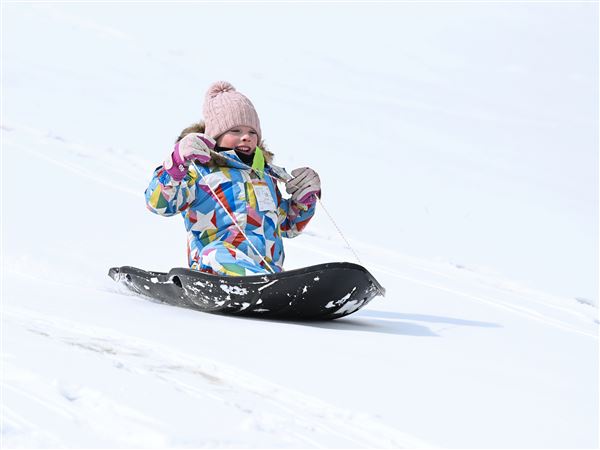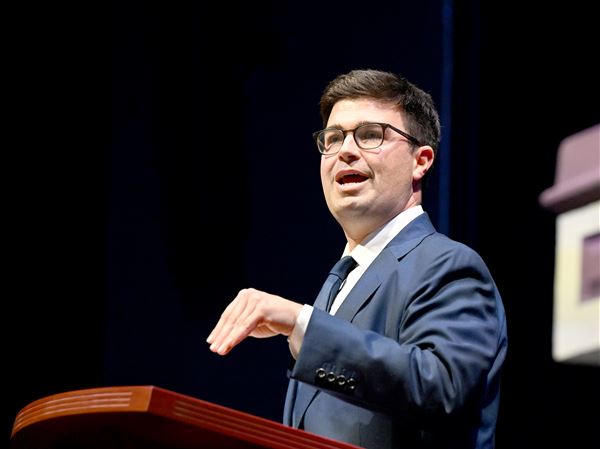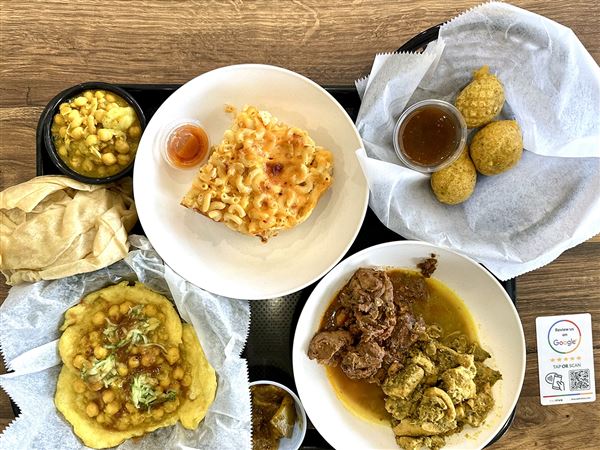It's the city of Boston, not Pittsburgh, that is sometimes called the next parish over from Ireland.
It's Chicago's river, not our own Allegheny, Ohio or Monongahela that is dyed green to celebrate St. Patrick's Day.
And it's New York City, not here, where the annual St. Patrick's Day Parade predates even the signing of the Declaration of Independence.
Yet today, St. Patrick's Day, and the rest of the year, Pittsburgh is greener than many may realize.
"The Irish in Pittsburgh have meant a lot to Pittsburgh, as the Irish have meant a lot to this country in general," said Dan Devinney of Lawrenceville, president of the approximately 1,000-member Allegheny County chapter of the Ancient Order of Hibernians, a Catholic, Irish men's organization that preserves Irish traditions, music, language and dance.
Just look to the last names of the region's politicians, bishops and leaders of industry, sports and entertainment down through history, and the Irish influence is clear, Mr. Devinney said.
And if a city's "green-ness" can be measured by the size of its St. Patrick's Day Parade, then according to Mr. Devinney's fellow Hibernian Pat O'Brien, Pittsburgh ranks near the top.
Pittsburgh's parade, a tradition in the city since 1869, is the second largest in the United States, just behind New York City's, said Mr. O'Brien, of West View, who has been on the parade committee for a decade and will be chairman next year.
This year's parade was held Saturday on Downtown streets.
About 25,000 people -- local dignitaries, pipe bands, Irish dance schools, high school bands, members of the Ancient Order of Hibernians -- march in the parade. Nice weather can draw up to 350,000 spectators along the parade route, Mr. O'Brien said.
Everyone is Irish today, although technically speaking, when the U.S. Census Bureau conducted its 2009 American Community Survey, its demographic estimates showed that about 15 percent of Allegheny County residents identified themselves as having Irish ancestry, making Irish the second-highest ancestry group, behind German at 21.6 percent and ahead of Italian, at 12.5 percent.
The story of the Irish in Pittsburgh dates to before the combined push of the Irish potato famine between 1845 and 1852 and the pull of the Industrial Revolution, said Joseph Coohill, a history professor at Duquesne University.
The earlier immigrants, like other Europeans who came to North America before the mid-1800s, were mostly men fleeing economic hardship or political retribution. Many of them became traders, trappers and merchants.
During the Industrial Revolution, immigrants flocked to coal-rich Western Pennsylvania, including many of the approximately one million Irish driven out of Ireland by famine. These later Irish immigrants faced some discrimination during the "No Irish Need Apply" years in the late 1880s, Mr. Coohill said, but for the most part, Irish immigrants had an advantage over other European immigrants because they spoke English.
"This is one of the reasons why, even though Pittsburgh has a great number of people of Irish descent, it feels more like an Eastern European town," Mr. Coohill said. "The Poles, Hungarians and Slovaks felt a stronger need to keep their identity, to band together to form social groups, and to build orthodox churches, which stand out architecturally from the more 'common' appearance of Protestant and Catholic churches."
Yet some parts of Pittsburgh and Allegheny County gained notice as the Irish sections of town, such as areas of Lawrenceville, the South Side and Downtown and the suburban communities of Carrick, Castle Shannon and O'Hara.
Nan Krushinski got her Polish last name from her father, but she comes from a long line of Irish ancestors, and she knows well the history of the Irish in Pittsburgh -- that they numbered among Pittsburgh's coal miners, steel workers, politicians and religious leaders.
"It runs deep. They helped build this city," she said.
She and her sister, Maura Krushinski, had long lamented the lack of a large Celtic celebration in southwestern Pennsylvania. They wanted a gathering to showcase Irish music and dance, so in 1991, they launched the Pittsburgh Irish Festival.
Held every September, six months from St. Patrick's Day, the festival booked Irish music legend Tommy Makem its first year and now draws more than 25,000 people each year.
From the annual festival has grown the Pittsburgh Irish Partnership, a nonprofit group that holds outreach events and lectures year-round to promote Irish culture.
Its work now dovetails with another group, the Friends of St. Patrick, which is in its inaugural year. That group is a chapter of a Northern Ireland-based service organization, and this year will work to attract members and promote peace and reconciliation.
The group's president, Fiona McGrath, who is Scottish, married a man who loved everything Irish, and she, too, became enthralled by the culture.
"There's something about the Irish themselves as people that I think is very appealing," Ms. McGrath said. "They are very open people, they are very welcoming people, and Pittsburgh certainly has that tradition."
"It was the strength of the Irish community here in Pittsburgh," Thomas Macik said, that persuaded him to open The Celtic Cross, an Irish specialty shop on Washington Road in Mt. Lebanon.
In the 1970s, he said, when all his friends were becoming hippies, he was discovering a love of Irish culture. And in Pittsburgh, he found vibrant expressions of that culture, especially in its music scene.
For more than a decade, he has sold Irish sweaters, Celtic crosses, Irish china and even Irish tea and digestives from his store. He described his core clientele as people who are "consciously Irish."
That includes some expatriates, but also people in Pittsburgh and surrounding areas who are very enthusiastic about their Irish culture, whether they are the sons and daughters of immigrants, half-Irish or Irish only one day a year.
Finding these Erin enthusiasts is easy enough. Some are saying prayers at St. Patrick Church in the Strip District. Some are listening to the "Echoes of Erin" radio broadcast each Sunday on WEDO out of White Oak, when Diane Byrnes plays Irish music, hosts Irish guests and reads the news out of Ireland. At Carlow University, founded in 1929 by the Sisters of Mercy of Carlow, Ireland, some students and staff are flying to Ireland for enrichment programs.
Erin enthusiasts also are in Mullaney's Harp & Fiddle in the Strip District, watching a re-creation of an Irish wake and tapping their feet to Irish beats. They are drinking Guinness and Smithwick's in Paddy's Pour House in Carnegie, at Molly Brannigans in Mt. Lebanon or Claddagh Irish Pub on the South Side.
"The profile of Irishness in Pittsburgh is very high," said Robert Tierney, vice president of the Ireland Institute of Pittsburgh, Downtown. "It seems to me to be one of the highest-profile populations here."
When Mr. Tierney left Dublin a decade ago to move to Pittsburgh, the only things his Irish friends knew of Pittsburgh was that it was the home of the Steelers and the general location of the 1978 film "The Deer Hunter."
In the ensuing years, Mr. Tierney said, many factors, including the dozens of movies shot in Pittsburgh over the past several years, have elevated Pittsburgh's profile.
Yes, in Pittsburgh, Irish eyes are smiling, and in recent years, people outside of southwestern Pennsylvania have started to notice.
Earlier this year, Michael Collins, Ireland's ambassador to the United States, named James Lamb, who is president of the Ireland Institute of Pittsburgh, the city's honorary consul of Ireland. The designation means Mr. Lamb, whose work with the Downtown nonprofit promotes peace in Northern Ireland, represents the Irish government in Western Pennsylvania.
The designation of Pittsburgh as an honorary Irish consulate is the Irish government recognizing that southwestern Pennsylvania is an important location for the Irish diaspora, Mr. Tierney said.
Perhaps more significantly, America's ambassador to Ireland is a Pittsburgher, and not just any Steel City native, but Dan Rooney, the Steelers owner who has put his efforts not just toward winning Super Bowls but toward creating peace in Northern Ireland through his work with the American Ireland Fund.
President Barack Obama named Mr. Rooney to the post in 2009, and last year, Mr. Rooney presided over a game of American flag football at his diplomatic residence.
Don't paint the bridges green yet, but with Dan Rooney in Ireland and the Irish consulate here, the city's international profile as a place with a strong Irish heritage is growing, Mr. Tierney said, and more people are beginning to see Pittsburgh as, among many other things, an Irish-green city.
First Published: March 17, 2011, 8:00 a.m.

















